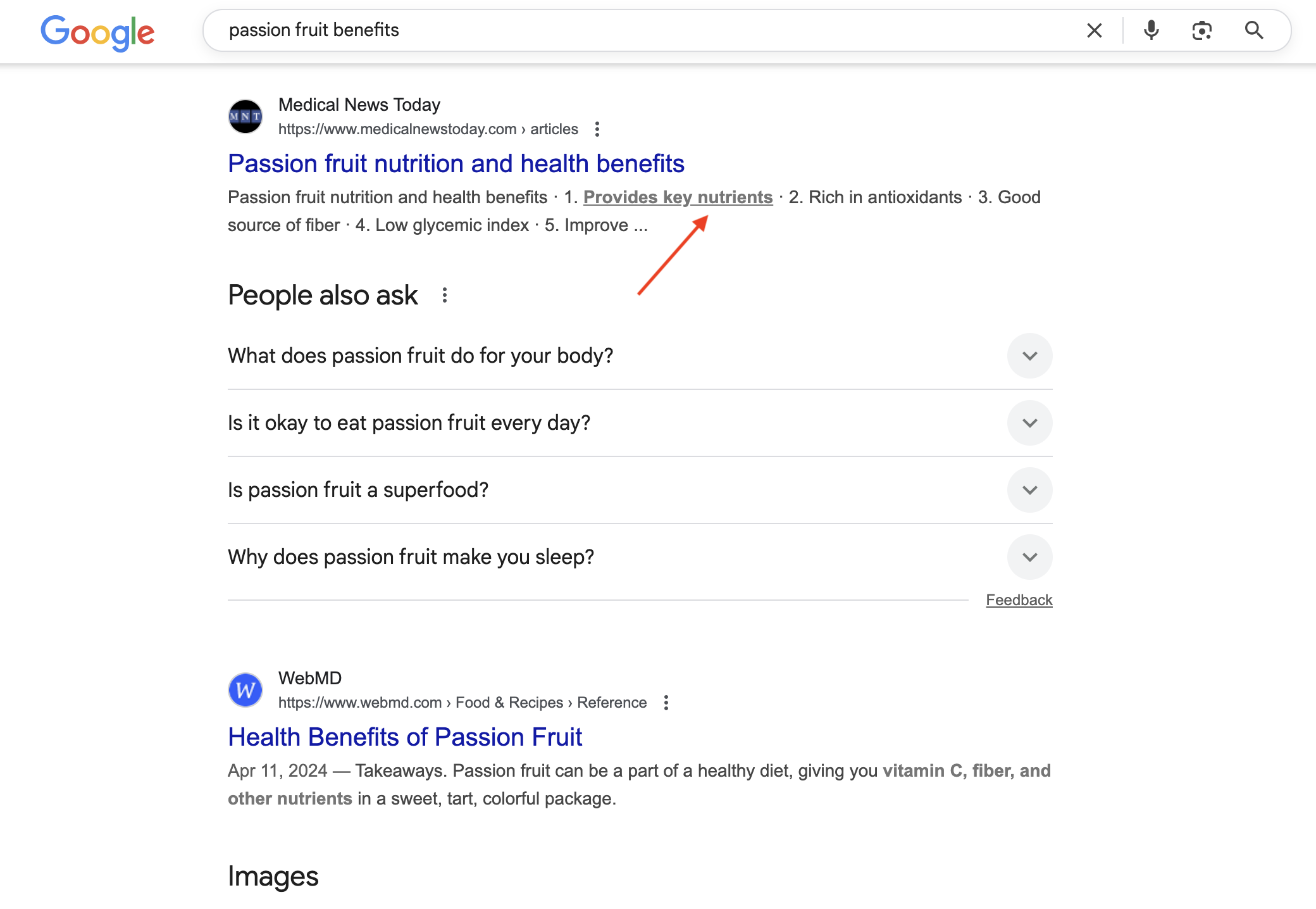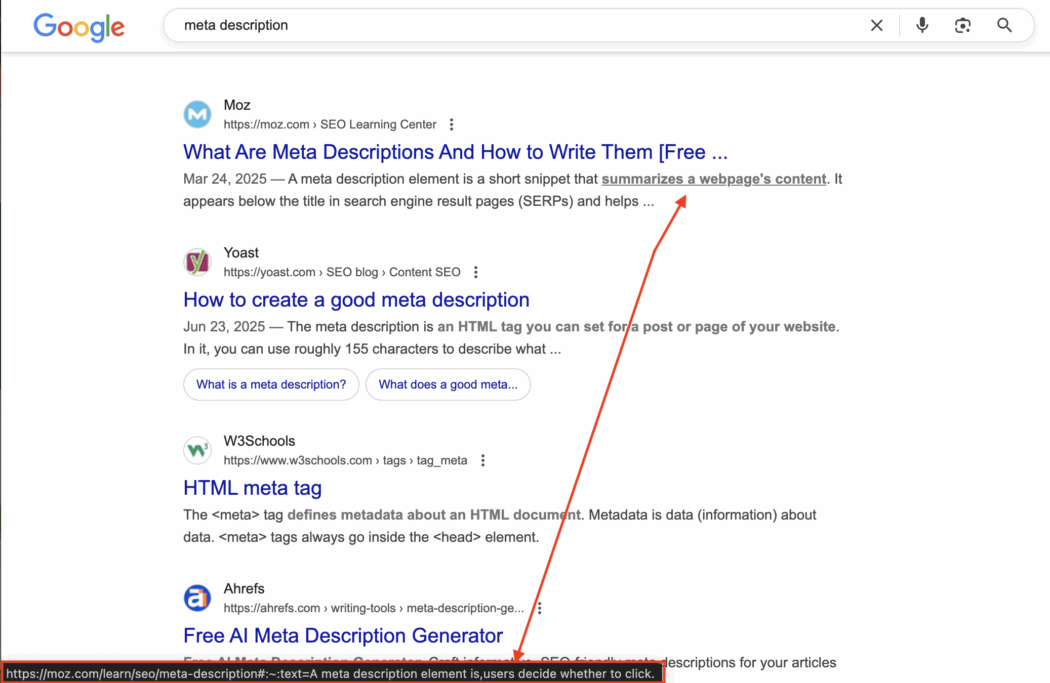If you thought Google couldn’t get more unpredictable with how it displays your content in the search results, think again. We’re now seeing cases where Google is embedding scroll-to-text fragments (#:~:text=) directly inside the description section of the SERP snippet, and yes, it’s visible as bolded phrases that become underlined when you hover over them.

This isn’t the usual behind-the-scenes behavior we’ve come to expect. Normally, in the past scroll-to-text links were appended to the URL part of the snippet but now we spotted real example where Google is now visibly showing (#:~:text=) scroll-to-text fragments in the actual SERP snippet (not just the underlying URL), that’s a big deal.
What Are Scroll-to-Text Fragments?
This feature was introduced a few years ago, allowing links to scroll directly to a highlighted portion of a page — even without an anchor tag. It looks like this:example.com/page#:~:text=some%20specific%20words
Until now, that fragment would only appear in the URL, not in the actual snippet preview.
What’s New (and Why This Matters)
It looks like Google is now testing the display of scroll-to-text fragments right inside the SERP snippet. That means Google is not only rewriting your meta description but also inserting its own generated link to a mid-page section. It’s subtle, but it can have significant implications for SEOs. This aligns with what we have seen in recent years: Google is willing to bypass your structure if it thinks it can deliver a better user experience.
What It Means for SEOs
This introduces a few things you might need to watch for:
- Less control over what users see before they land on your page
- More visibility into how Google’s NLP engine is parsing and prioritizing your content
- Potential drop in view of the intros, CTAs, or top of-the-fold sections when users are being dropped straight into a mid-page answer
It is also a reminder that the traditional meta description is now more of a polite suggestion than a guaranteed SERP preview.
Should You Optimize for It?
At this point, you can’t force Google to generate or show a scroll-to-text link, however you can make it easier for them to find useful passages:
- Use clear subheadings and answer-style formatting
- Write paragraphs that can stand alone when stripped of context
- Avoid burying critical info beneath layers of intro copy
Final Thought
This may just be a test, or it might quietly roll out further in the coming days. (If you can’t replicate it, try using an Incognito tab in Chrome.) Either way, it’s another example of Google’s ongoing effort to deliver quick, direct responses that address the user’s search intent. At the end of the day, it’s Google and it does what it wants with your content. So next time you check your rankings, don’t just look at position. Look at how Google is framing your content, and whether it’s linking to the part you intended.

